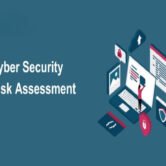
Detail the process of conducting a cybersecurity risk assessment for a new business.
Introduction
Launching a new business in today’s digital economy means entering a landscape filled with both opportunity and vulnerability. From day one, startups are exposed to cybersecurity risks that could jeopardize their data, systems, customer trust, and overall viability. A cybersecurity risk assessment is a strategic process that identifies potential threats, evaluates vulnerabilities, and prioritizes security measures. It serves as the foundation for developing a comprehensive cybersecurity plan that aligns with business goals and safeguards critical assets. For a new business, conducting a risk assessment early on is essential not only for compliance and resilience but also for building a security-first culture from the ground up.
Identifying Critical Assets and Data
The first step in a cybersecurity risk assessment is to determine what needs protection. This involves cataloging all digital and physical assets used by the business. These may include cloud-based storage systems, proprietary software, customer databases, employee devices, financial records, and internal communication platforms. Equally important is identifying the types of data the business collects, processes, and stores—such as personally identifiable information (PII), intellectual property, and payment information. Understanding where these assets reside and how they interact helps create a baseline for evaluating risk exposure.
Mapping Systems and Digital Workflows
Once the key assets and data points are identified, the next step is to map the technology ecosystem and workflows that power the business. This includes documenting how systems are connected, how data moves between platforms, and who has access at each point. The goal is to visualize the architecture of your IT environment, including external integrations like APIs, third-party applications, and cloud services. This system mapping reveals potential entry points and interdependencies that could become targets or conduits for cyber threats.
Identifying Potential Threats and Vulnerabilities
After mapping the environment, the assessment moves into identifying potential threats. These can be internal (such as employee negligence or insider misuse) or external (including hackers, phishing attacks, malware, or denial-of-service attacks). Simultaneously, it’s important to pinpoint vulnerabilities—weaknesses in the system that could be exploited. Examples include outdated software, unsecured Wi-Fi networks, weak passwords, or inadequate access controls. Tools such as vulnerability scanners, penetration testing, and configuration audits can assist in discovering hidden flaws.
Assessing the Likelihood and Impact of Threats
Not all threats are created equal, and businesses must evaluate each based on two dimensions: the likelihood of occurrence and the potential impact on operations. This step helps prioritize risks based on severity. For example, a data breach involving customer information may be low in likelihood but high in impact, requiring proactive mitigation. Conversely, frequent phishing attempts may have lower impact but higher probability, necessitating continuous monitoring and employee training. Risk levels can be categorized using a scoring system or heat map to help guide response strategies.
Reviewing Existing Controls and Practices
With risks prioritized, the next step is to evaluate what security measures are already in place. These may include firewalls, antivirus software, backup systems, encryption protocols, or user authentication procedures. The assessment should determine whether current controls are sufficient to mitigate identified risks or if enhancements are required. Gaps in coverage—such as missing endpoint protection, lack of staff awareness, or outdated policies—must be documented and addressed.
Developing Mitigation Strategies and Action Plans
Based on the identified risks and existing control gaps, the business should develop targeted strategies to mitigate exposure. These strategies may include implementing two-factor authentication, segmenting networks, upgrading software, limiting third-party access, or establishing clear data handling policies. Each action plan should be assigned a priority level, timeline, and responsible party. Mitigation strategies should also be scalable, allowing the business to adapt as it grows or as new threats emerge.
Documenting the Assessment and Creating a Risk Register
A critical part of the process is documenting the findings in a structured and accessible format. This includes a comprehensive risk register that lists each threat, associated vulnerability, likelihood and impact scores, existing controls, and recommended actions. The risk register becomes a living document that guides ongoing security efforts, supports audits or compliance requirements, and provides a reference point for future assessments.
Establishing Monitoring and Review Protocols
Cybersecurity risk assessments are not one-time activities. As the business evolves—introducing new technologies, expanding teams, or entering new markets—the risk landscape changes. Therefore, the final step in the process is to define how and when the risk assessment will be reviewed and updated. Ongoing monitoring, periodic audits, and internal training ensure that security posture remains strong and responsive. New threats, vulnerabilities, or incidents should trigger immediate reassessment.
Conclusion
Conducting a cybersecurity risk assessment is a crucial process for any new business aiming to operate securely in a digitally connected world. By systematically identifying assets, mapping systems, evaluating threats, and implementing mitigation strategies, startups can build a proactive defense against cyber risks. This process not only protects valuable data and operations but also lays the groundwork for compliance, investor confidence, and scalable security practices. In an era where cyber threats are increasingly sophisticated and frequent, a well-executed risk assessment becomes a strategic advantage for long-term resilience and growth.
Hashtags
#Cybersecurity #RiskAssessment #NewBusiness #BusinessSecurity #CyberRisk #DataProtection #InfoSec #RiskManagement #CyberAwareness #BusinessContinuity #ThreatAssessment #VulnerabilityAssessment #SecurityStrategy #Compliance #CyberSafety #SmallBusiness #ITSecurity #DigitalSecurity #BusinessGrowth





